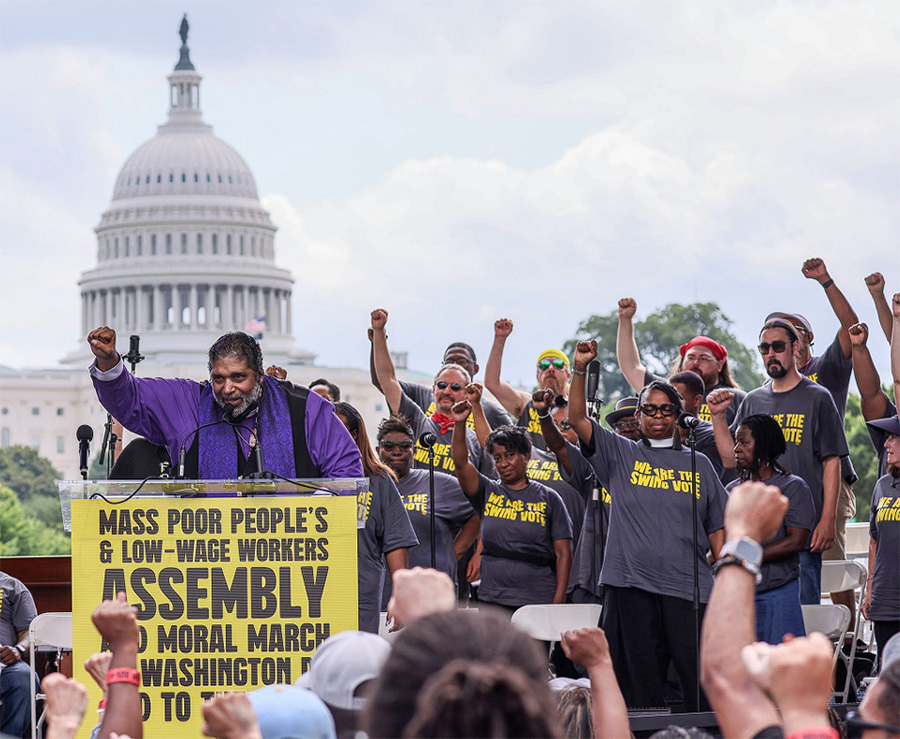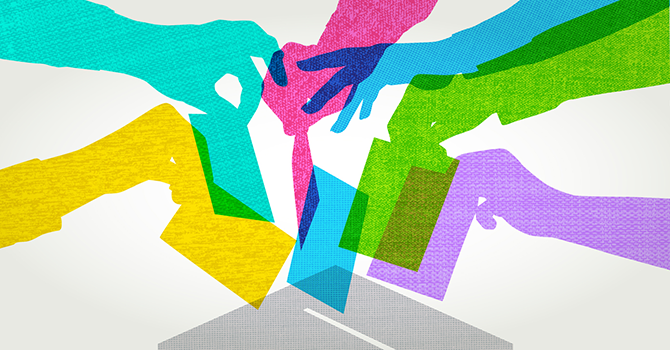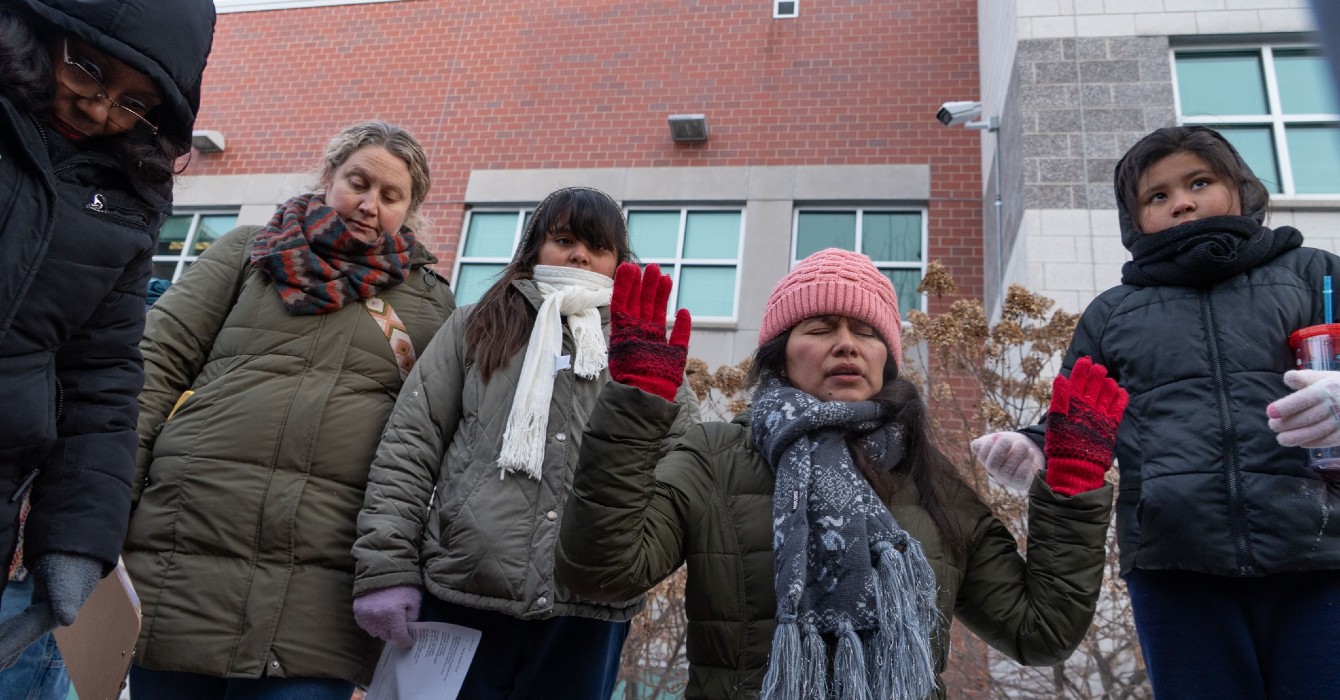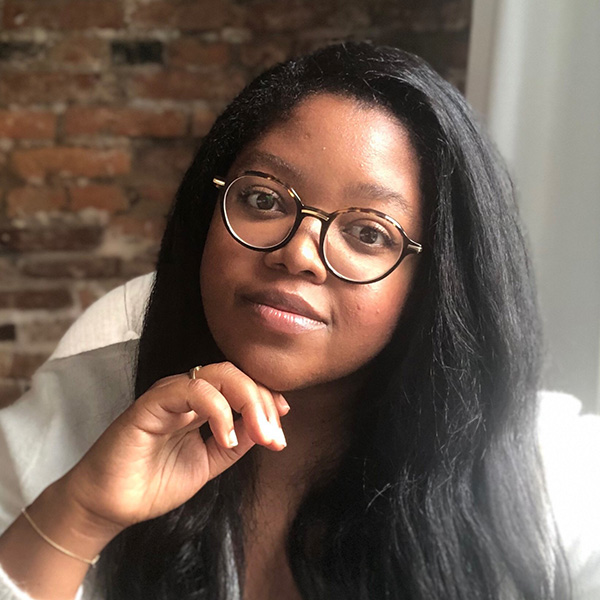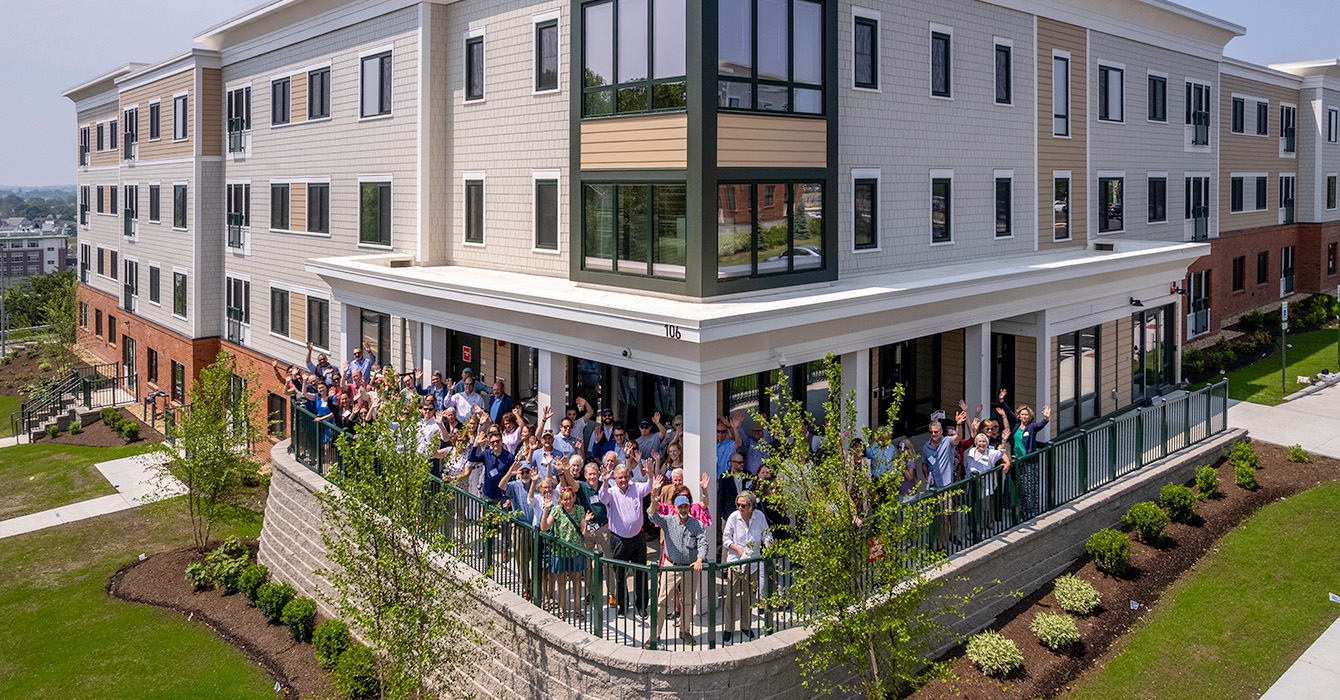Editor’s note: Faith & Leadership also published an excerpt from the book.
Jonathan Wilson-Hartgrove and the Rev. William Barber II have been organizing together for years in the Poor People’s Campaign. Most recently, the collaboration has also produced a book, “White Poverty: How Exposing Myths About Race and Class Can Reconstruct American Democracy.”
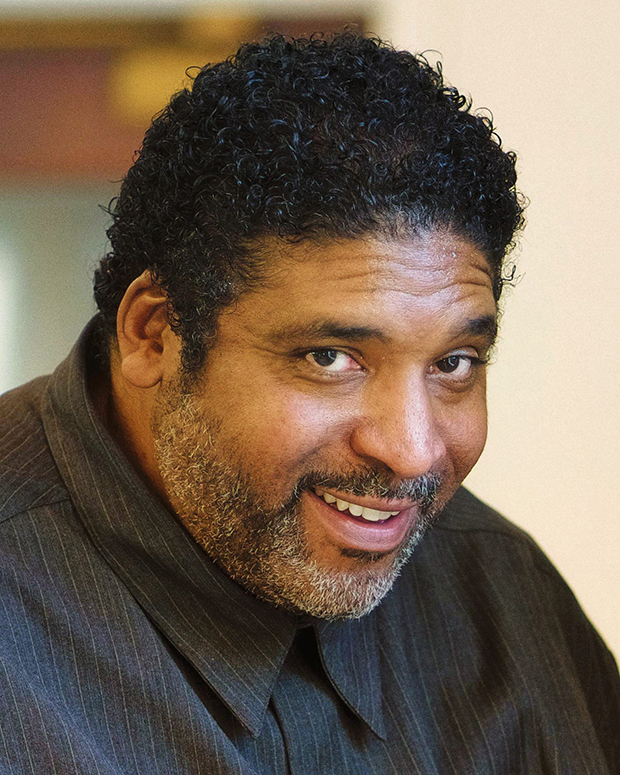
Wilson-Hartgrove says he acted as a “scribe” of sorts, helping put into writing the ideas and vision of Barber and the Poor People’s Campaign.
“It’s a collaborative process we’ve gotten pretty used to, throughout this book, and really for the past decade or so,” Wilson-Hartgrove said.
The book argues that pairing certain demographics — like Black Americans — with poverty is one of the pernicious and persistent myths that prevent Americans from seeing how widespread poverty is. But by mobilizing the poor from across demographics — especially the white poor — Wilson-Hartgrove and Barber argue that a critical mass might be unified to help make America work for everyone.
Through historical observation and organizing wisdom, Wilson-Hartgrove and Barber critique myths related to poverty and offer a vision of a “third reconstruction,” where democracy can fully work for everyone and not just the rich.
Wilson-Hartgrove spoke with Faith & Leadership’s Chris Karnadi about the book, the organizing being done through the Poor People’s Campaign, and the possibilities for America in a third reconstruction. The following is an edited transcript.
Faith & Leadership: What were the origins of this book?
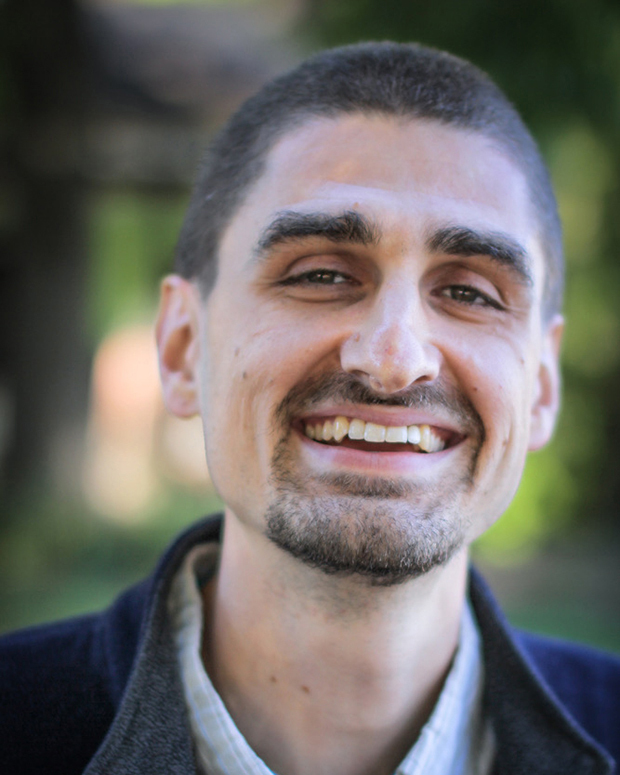
Jonathan Wilson-Hartgrove: The book grows out of the organizing work and preaching that we’ve been doing for years.
We have had a growing recognition since 2015 that white poverty creates a real political vulnerability in the United States, because there are whole communities of people who understand that the system doesn’t work for them. But in so many of the places where that’s the reality, they don’t have real political options in terms of voting for some kind of change, and so we thought it was important to address white poverty.
And as somebody who comes from a rural white community, I just really was glad for the chance to write it with Rev. Barber. I think his voice has been so important because he’s been willing to go to those communities over the past decade and to organize people and to talk about how racism has actually hurt those communities as well as hurting the people it targets.
That’s where our thinking behind the book began, and it actually led us to have conversations with the potential Democratic candidates in the 2020 cycle. We offered to have this conversation with the Trump campaign too, but they weren’t interested.
We talked to several of the Democratic candidates. In one of those conversations, we talked with Pete Buttigieg, who was the mayor of South Bend, Indiana, at the time and really resonated with this idea. We were happy to have him endorse the book and have been continuing to have this conversation with people who recognized the need to communicate a vision for an economy that works for all of us, that takes white poverty seriously.
F&L: In your view, what is poverty?
JWH: We decided early on in the book to be intentional about trying to redefine poverty, because in our movement-building work, but also in our ministries and the church, both Rev. Barber and I have experienced that people rely on this sense that poverty doesn’t affect that many people.
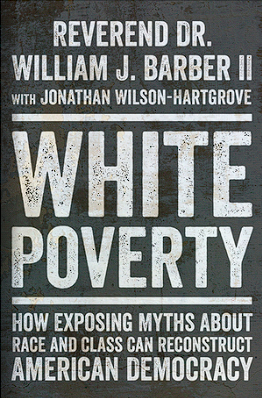
As we argue in the book, that perception comes from the way that we measure poverty in the United States. The official poverty measure was established in the 1960s and is basically built on a threshold of three times the cost of food. That measure, while it has changed with inflation, hasn’t kept up with the disproportionate change of the cost of housing, transportation, education and medical care.
So the baseline is so low that I think this year if you make $15,000 as an individual, you’re not considered to be in poverty by the government — but there’s nowhere in the United States where you could even afford to rent a basic apartment making $15,000 a year.
That means that there are people making as much as twice the poverty level who really can’t have what most people consider the basics to survive, like a place to live, some access to transportation that can get you to a job, food to eat and clothing and these kinds of things. We’re not talking about luxuries; we’re just talking about the basics of life.
The measure we use says that there are actually 135 million people living in poverty this year, or roughly 40% of the U.S. population, if poverty is just living against the edge of not being able to make your basic necessities.
That’s a lot more people than most think about when they think about the poor. And when you talk about the fact that we live in a society where 40% of the people live with that reality, then you’re looking at something that really is a systemic problem, and it’s harder to blame it on people’s personal failings or a culture of poverty that only certain subgroups of the American culture participate in.
Diagnosing a problem is important work for a book to do, but then it’s also important to give a convincing and powerful solution to that problem.
We say from the start that moral fusion organizing toward the third reconstruction is the vision that we want to hold, and that we believe it’s what has the potential to reconstruct democracy in this time. That’s there from the beginning.
The conclusion really does unroll and narrate this vision of what a third reconstruction can look like. It talks about what we think are the real successes that we’ve seen in the Poor People’s Campaign and outlines the capacity to grow that and have organizing in this moment that could really redefine the political possibilities.
F&L: Why has poverty remained a core part of U.S. society?
JWH: At the heart of race and the way race has worked in our society is the way that it has created these myths that obscure the reality of poverty.
I think the main reason this has been an enduring issue in American life is because we don’t see it and name it for what it really is. In the book, we wanted to try to call poverty what it is, to call it a real epidemic in the American economy, and to make clear that we are trying to dispel these myths, like that poverty is a Black issue or that we can’t overcome division, because they obscure this thing that we have both the resources and the ideas to address, but we don’t.
F&L: What does a third reconstruction look like?
JWH: We’ve had two serious attempts to reconstruct American democracy, one after the Civil War, and one in the mid-20th century that we usually call the Civil Rights Movement.
Both of those were efforts that took constitutional amendments and major legislation to try to change the structure of society. But I think behind that, what we see is that there were these fusion movements that grew from the ground up that pushed, and that made those real structural changes possible.
We think a third reconstruction has to look like people who have been pitted against one another by these myths coming together and building power, building movements that push toward real structural change at the policy level, but that grows out of that movement building.
So a third reconstruction looks like lots of different kinds of movements growing from the ground up and coming together around a shared vision of a different kind of political economy, where poverty isn’t tolerated.
F&L: How do myths about poverty play into this election cycle?
JWH: This poverty that we’re naming and describing is a real vulnerability and impacts so many people, it makes it possible for the kinds of populist appeals like we see from the MAGA movement.
From politicians like Trump and Vance at the top of the Republican ticket right now, they can advocate for policies that are even more extreme and in favor of billionaires and corporations that have consolidated so much wealth in this economy and yet appeal to working people and have these populist appeals that are really about playing into the cultural wedge issues and divisions that the myths have so long perpetuated.
To counter that, one of the things we write about in the book is how significant it has been when political candidates and leaders have adopted the language and the policy proposals of grassroots, worker-led movements that are advocating for change, and doing that in a way that’s not simply partisan. It’s not a progressive or a radical idea to say that people deserve a living wage or that people should be able to afford housing in the places where they work.
We write about how that made a huge difference in a place like Kentucky that’s often considered a deeply red state. A movement was actually being led by a Trump-endorsed candidate in 2019 when Andy Beshear first ran for the governor’s office there. And we were there with groups that were organizing, especially in eastern Kentucky, to talk to people about how they were being harmed by policies that didn’t consider their best interest.
Building power and building coalitions across dividing lines is incredibly important. That gets amplified in powerful ways when politicians adopt that language and speak directly to those groups, because political campaigns have so much money and dominate the media discourse to such a degree. These movements that have grown from the ground up can reach tens of millions of people when they’re adopted by campaigns.
So it’s really encouraging to see a campaign like the Harris-Walz campaign embracing “When we fight, we win,” which has been the slogan of the low-wage worker movement for the past decade. And it’s significant that in the vice presidential considerations of the Harris campaign, she chose the candidate who was publicly endorsed by labor unions.
So yeah, I think there are real signs that we have a ticket that is willing to embrace the language and the policy proposals of these kinds of movements, and I think that has potential to really change the response of people to the candidates.
These things then have to get translated into policy, and that means holding politicians accountable. It also means, in practical terms, that politicians have to have majorities in all the places where they need votes.
That can only happen, again, as movements behind these ideas grow and continue to build power and see their work as more than simply supporting any single candidate or campaign cycle, but really as a kind of movement building toward a reconstruction, toward a vision of a different kind of democracy. Having movements that are committed to that long-term work and to doing it during and between election cycles is really important.
F&L: At the end of the book, you talk about your own background as someone who grew up in a poor white community. Can you talk about how you’ve seen this type of coalition building happen in your own life?
JWH: At the end of the book, I reflect on all of what we’ve been saying throughout the book, but in terms of my own story. I was thinking about my great-grandmothers and the way that their existence — particularly their existence as people who sort of doted on and loved me and my brother when we were young in the place where we were.
That in and of itself dispels some of the political myths that have dominated American life during my lifetime, because they were beneficiaries of government programs that were demonized and attacked by the political leadership of that community as we were growing up.
In so many ways, communities like the one I grew up in have been gutted by the disinvestment that resulted from that kind of politics. Recognizing how that does touch me personally, my own story and my own family, is a way of saying that I have the skin in this game. I’ve seen how politicians selling out communities like ours not only has hurt us economically but also has been an embrace of this extreme and divisive kind of politics that’s torn apart all kinds of churches and families that I grew up with.
This leaning heavily into the wedge issues of abortion, gay marriage, trans rights and other rhetoric has been so poisonous to communal life in those places.
At the same time, there are people who have become poorer and less resourced and have less support, even for our public schools and things like that. It’s personal for me, and the hope that I’ve seen is that a movement that can bring poor and low-income people together and can help us name what we have in common — this movement has been able to name and express the grief that I think has gone unspoken and unprocessed for communities like mine.

